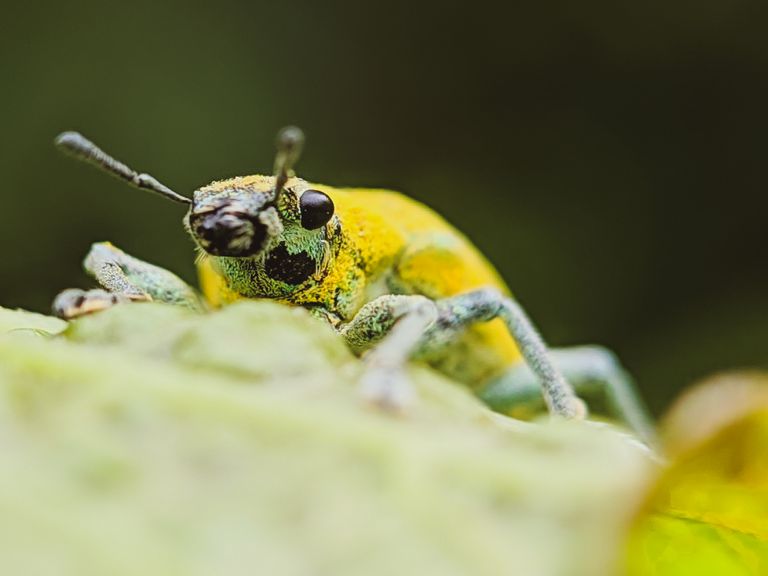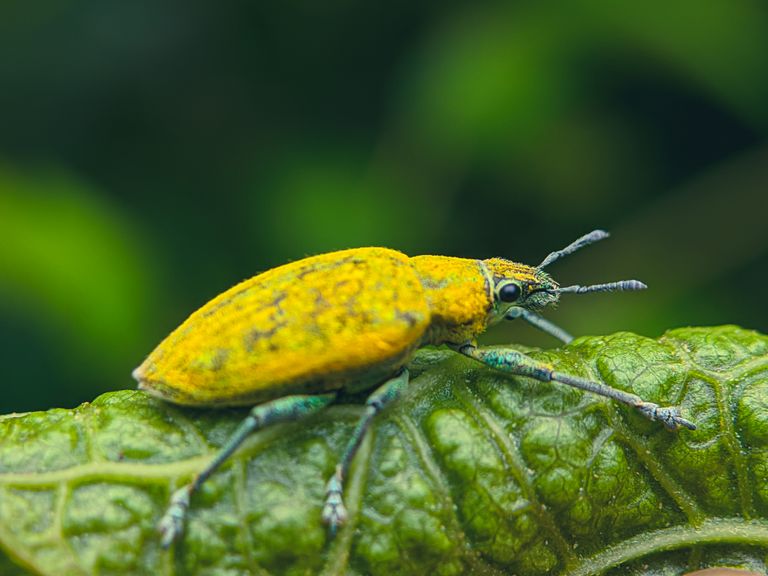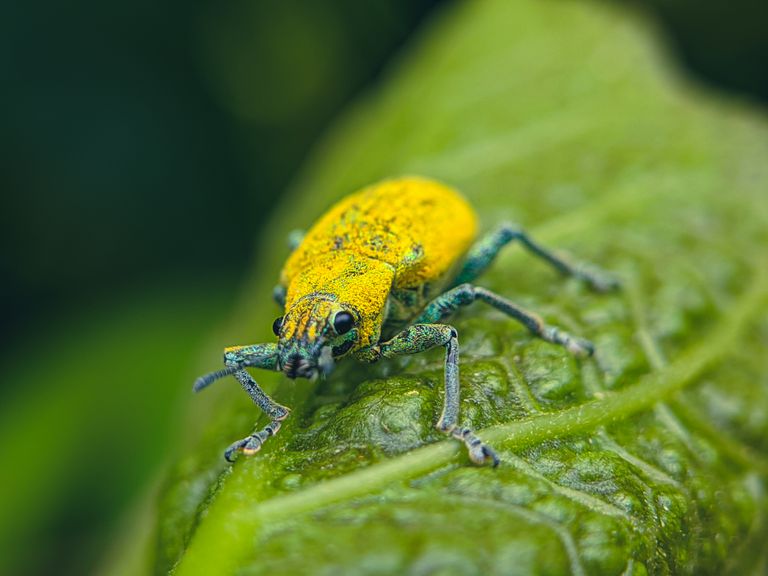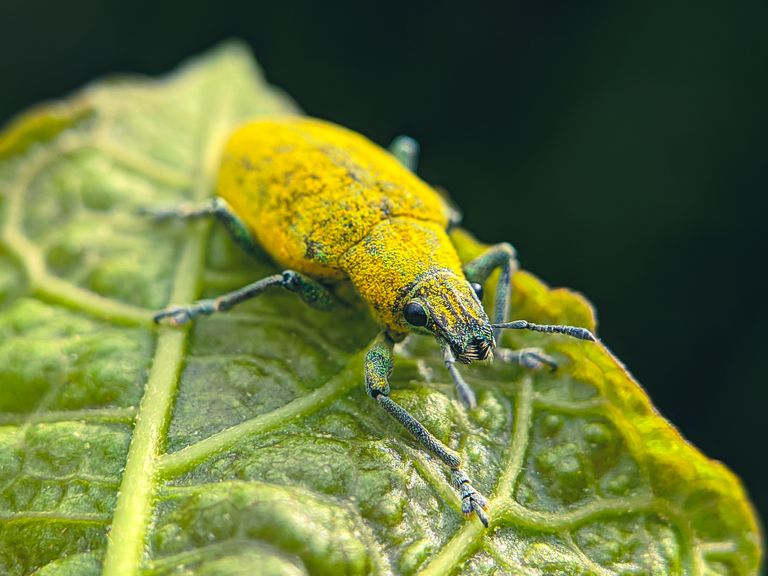
Weevils, also referred to as nunus, are beetles belonging to the superfamily Curculionoidea, known for their elongated snouts. They are usually small, less than 6 mm (1⁄4 in) in length, and herbivorous. Approximately 97,000 species of weevils are known. They belong to several families, with most of them in the family Curculionidae (the true weevils). Some other beetles, although not closely related, bear the name "weevil", such as the biscuit weevil (Stegobium paniceum), which belongs to the family Ptinidae.





Many weevils are considered pests because of their ability to damage and kill crops. The grain or wheat weevil (Sitophilus granarius) damages stored grain, as does the maize weevil (Sitophilus zeamais) among others. The boll weevil (Anthonomus grandis) attacks cotton crops; it lays its eggs inside cotton bolls and the larvae eat their way out. Other weevils are used for biological control of invasive plants.
A weevil's rostrum, or elongated snout, hosts chewing mouthparts instead of the piercing mouthparts that proboscis-possessing insects are known for. The mouthparts are often used to excavate tunnels into grains.[1] In more derived weevils, the rostrum has a groove in which the weevil can fold the first segment of its antennae.